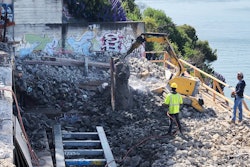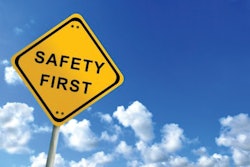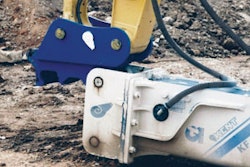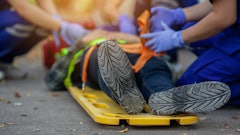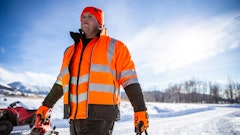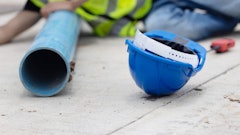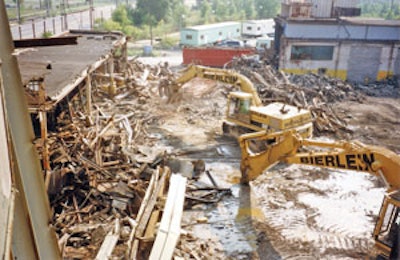
There are no government statistics isolating the number of fatalities that occur specifically in demolition. However, fatalities in the construction industry overall have remained constant for over 20 years, even as the number of construction projects has quadrupled. The obvious conclusion is that safety awareness has played a huge role in making the industry a safer place to work.
Some experts conclude that the very nature of demolition - and its potential for danger - keeps the industry on its toes. Professor Steve Schuette, head of Purdue University's Department of Building Construction Management, which offers a specialization in demolition, believes the demolition industry is more concerned with safety than any other construction sector. "The intense focus that the National Demolition Association's (NDA) members keep on safety is what leads to the industry's excellent safety record," he asserts.
Once perceived as a dangerous business, demolition today has become a relatively safe industry. Yet, in order to maintain this achievement, companies new to demolition need to establish safety programs specifically tailored to demolition operations. Perhaps an overview of what constitutes a good, effective safety program is in order.
Go by the book
The most important step for any company involved in the demolition process is to have a written safety program and a safety director.
Most Fortune 500 companies contracting for demolition work require written copies of a formal demolition safety plan. Many companies use the NDA's Demolition Safety Manual as the basis for their program.
First published 25 years ago, and continually refined by the NDA's Employee Health and Safety Committee, the Demolition Safety Manual is considered by many to be the first and last word in safe demolition practices. It is correlated to OSHA's Construction and General Industry Standards 29 CFR 1926 and 1910. If properly used, it can help lead to fewer injuries, safer jobsites and lower workers' comp premiums. It should be used in conjunction with your training program in safe work practices.
For companies without a full-time safety director, it is essential that someone be placed in charge of demolition safety. Even if that person has other responsibilities, he or she should have the title of safety director to communicate company wide the priority placed on a safe workplace. The safety director should report to the chief executive officer and have the full support of top management.
Hiring and training
Preventing injuries begins before a person is hired. Knowing a prospective employee's workers' comp and motor vehicle history will often give you a good indication of whether they have developed safe work habits.
Pre-employment physicals are advisable to determine pre-existing conditions. They should include hearing tests and blood lead levels to establish baselines. If a person is going to wear a respirator, OSHA requires a chest X-ray and spirometry testing.
Prospective hires should know up front what the company's policy is on controlled substances, safety equipment and safety rules.
Once a person has been hired, training is the next step. In addition to your company training, many other sources of information are available, such as OSHA's 10- and 40-hour safety courses, which are taught nationwide. OSHA compliance officers will also come and speak at company safety meetings and conduct voluntary inspections of jobs. In larger cities, unions may have their own training programs and facilities.
The NDA also provides its members with a Hazard Communication Program. The program is designed to provide the latest information on Right-to-Know requirements, as well as sample Material Safety Data Sheets (MSDSs) for materials found on a typical demolition site.
There are many good training programs available on video or DVD. The NDA makes available to members videos on new employee orientation, lead in construction and skid-steer safety, in English and Spanish.
Workers who use English as a second language, or speak no English at all, are often embarrassed about their lack of competency, even to the point of worrying they might lose their jobs because of it. The ideal situation is to have bilingual foremen (or at least a bilingual co-worker) with all foreign language-speaking workers. This is essential when working in a potentially dangerous environment.
Safety on site
Once a new-hire has been oriented, trained and is ready to go, it is better to start him or her with simple jobs to confirm the person's competency level. It is also a good idea to initially keep the person with your most safety-conscious foreman.
Keeping all of your people (not just new hires) "in the loop" is extremely important for worker safety. Before starting any job, the estimator, superintendent, foreman and safety director should get together to determine exactly what is going to take place, how it will be done and everything that could possibly go wrong while it is being completed.
As the job progresses, the foremen should conduct daily safety meetings first thing in the morning. It is much better to have a two-minute meeting five times a week than one weekly 10-minute meeting. Every meeting should be documented and submitted to management regularly. Repetition of safety procedures is an important key to avoiding accidents. And providing the right PPE can mean the difference between a hospital trip and an accident avoided.
OSHA requires that certified people and fully stocked first aid kits be ready when the jobsite is not near a medical facility. Do not count on people who think they know first aid; make sure they actually have the correct training. All foremen should know the basics and be able to recognize how and when to transport people and how to control bleeding.
Burns are highly susceptible to infection, and it is often hard to judge their severity. For that reason, medical care for all burns is advisable. Instant chemical ice packs, which stop the slow penetration of a burn, should be part of every first aid kit.
Make sure everyone knows where the closest hospital or clinic is to minimize confusion in the event of an accident. When choosing nearby clinics, it is best to select one that can handle industrial-type accidents and is affiliated with a hospital. If your staff includes non-English-speaking workers, it is important to locate a bilingual medical staff.
As soon as possible after an accident, a written report should be completed for a number of reasons. Among the most important is that it will serve as a learning tool to prevent a recurrence.
Learning from past experiences, using the right equipment, staying up to date with the latest safety devices and proper training are what make up the best demolition safety programs. They all have made a potentially dangerous business a much safer one.
Major Safety Concerns The following are among the major safety concerns for those involved in the demolition process:
|





